Buddhism Could Now Be the 2nd Largest Spiritual Path with 1.6 Billion or 22% of the World’s Population According to Some Recent Studies
Buddhism has never been a “propagation” spirituality. Actively seeking out “converts” is discouraged for the most part. Individual spirituality is emphasized more than group activities. Some people don’t even think of Buddhism as a “religion”—certainly not an organized religion with dogma. So, it is with sense of optimism—without pride or attachment?—that we report the latest estimates of Buddhist population worldwide at over 1.6 billion, now closing in on a quarter of the population.
Why optimism? Because, it’s remarkable that a spirituality and philosophy with no central authority, no rigid dogma and no mission to proselytize, can never-the-less quietly grow. It’s not a matter of pride, but one of inspiration and hope.
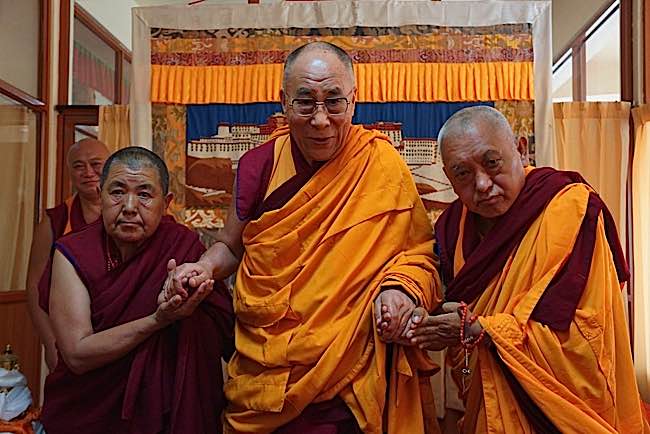
This may be an optimistic number, given 2010 estimates around 500 million, and I’m the first to doubt this number. I believe the real number is somewhere between the low estimates of 500 million or so (in 2010), and the 1.6 Billion being floated today. Tibetan Buddhism especially has accounted for much of the growth in the west in earlier reports (2010 estimates). But in sheer numbers, China’s sudden official re-embracing of Buddhism makes the higher number is feasible, given their population density.

China Officially Supports Buddhism
Clearly, the return of active spirituality in China accounts for the surge in estimates from 7% or 488 million Buddhists [1], only a few years ago, to today’s estimates of 1.6 billion or 22% of the world’s people. China, only a few years ago, was attributed a mostly non-spiritual status. Now, with freedoms returning, there are over 28,000 Buddhist monasteries, 16,000 temples and 240,000 Buddhist monks and nuns. 80% of the Chinese population, just over 1 billion, now—according to some estimates—call themselves lay Buddhists. Other estimates are much lower, varying from expert to expert.
If you believe the majority of Chinese are Buddhist — considering Buddhism is now officially supported in China and their active program to rebuild temples — then the 1.6 billion estimate seems at least possible. Previous studies, prior to official support, estimated China’s Buddhist population at only 244,130,000. [3]
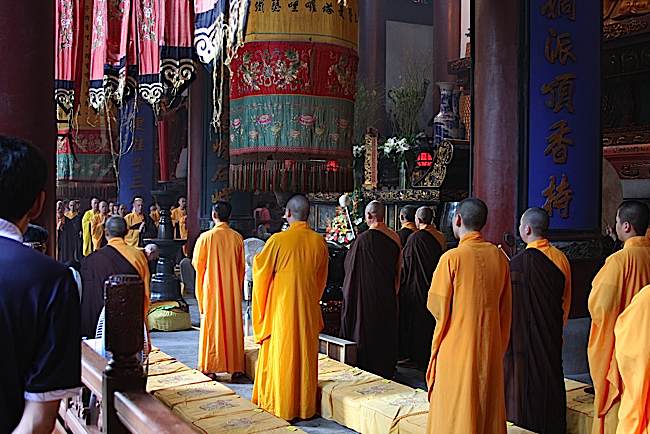
Numbers Just Another Label
So which is it? The conservative estimate indicated in 2010 studies at just about half a billion, or the 1.6 Billion, now estimated by some studies in 2014? It doesn’t really matter, of course. Numbers are just a label of another kind. The number is just a matter of curiosity or interest, nothing more.
Russia Embraces Buddhism?
A Buddhist temple is now being constructed in Moscow, the Russian capital, for the first time, signalling the countries openness to diverse spiritualities. The temple is scheduled to be completed by 2017. The temple will have it’s own library, a cinema, a five meter statue of the Buddha and will have a clinic for Tibetan Buddhist medicine. [4]
Russia and China’s sudden re-embracing of Buddhism is a hopeful sign of peaceful, organic growth of Buddhism in all its forms worldwide.
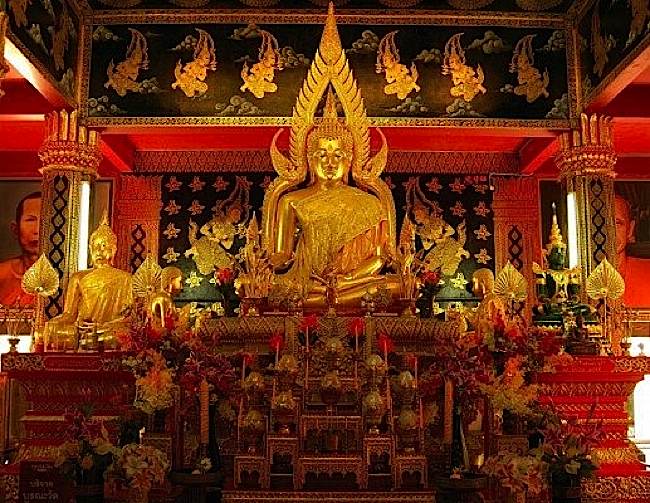
How do we know?
How do we know this is a reliable estimate? There’s no worldwide census to rely on, but this data is reasonably extrapolated by Dr. Daya Hewapathirane, based on studies published in 2010 and 2013. The shift in numbers (from 6% to 22%) is largely due to the willingness of the Chinese population to now identify with Buddhism. Prior to the mid-1990s , religious affiliations in China may not have been openly declared. Between 1966 and 1976, in particular, religion was discouraged.
Now, China is actually encouraging the promotion of Buddhism, and not just Shaolin monk world tours and tourism. China affirmed its status as the most populous Buddhist nation and “declared its commitment to spearhead and support international initiatives to protect Buddhism and Buddhist culture,” according to Dr. Hewapathirane.
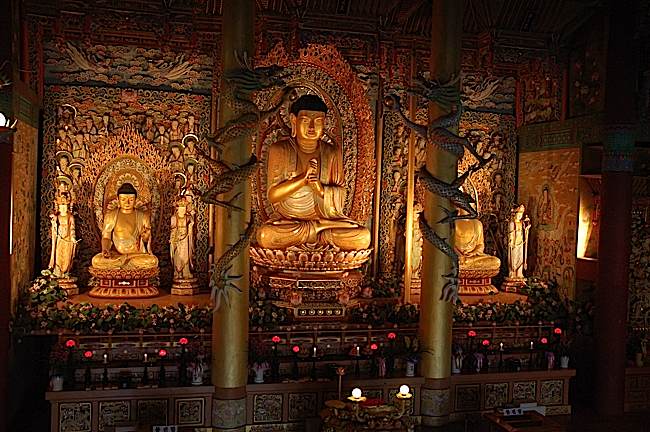
Around the World
In addition, Buddhist populations have grown in other countries. Remarkably, over 14 countries have Buddhist populations at more than 50% of citizens. Seven of these countries indicate Buddhism is practiced by 90% of their populations.
The 14 countries with higher than 50% Buddhist populations are:
- Cambodia 97%
- Japan 96%
- Thailand 95%
- Taiwan 93%
- Mongolia 93%
- Myanmar 90%
- Hong Kong 90%
- Bhutan 84%
- China 80% [this is according to note 2 below. It is significantly less in earlier reports note 5 below, at 102 million people and another report at 500 million. However these were both prior to China’s new “promotion” of Buddhism]
- Vietnam 75%
- Sri Lanka 70%
- Laos 67%
- Tibet 65% [5]
- Singapore 51%
- South Korea 50%
NOTES
[1] Low estimate according to Adherents.com
[2] “World’s Buddhist Population” Dr. Daya Hewapathirane. Also, information extrapolated from CIA’s World Fact Book
[4] “Moscow’s First Buddhist Temple” World Religion News
[5] Stats from [2] above and from “Largest Buddhist Populations” Buddhanet.net.
37 thoughts on “Buddhism Could Now Be the 2nd Largest Spiritual Path with 1.6 Billion or 22% of the World’s Population According to Some Recent Studies”
Leave a Comment
More articles by this author
Search
Latest Features
Please support the "Spread the Dharma" mission as one of our heroic Dharma Supporting Members, or with a one-time donation.
Please Help Support the “Spread the Dharma” Mission!
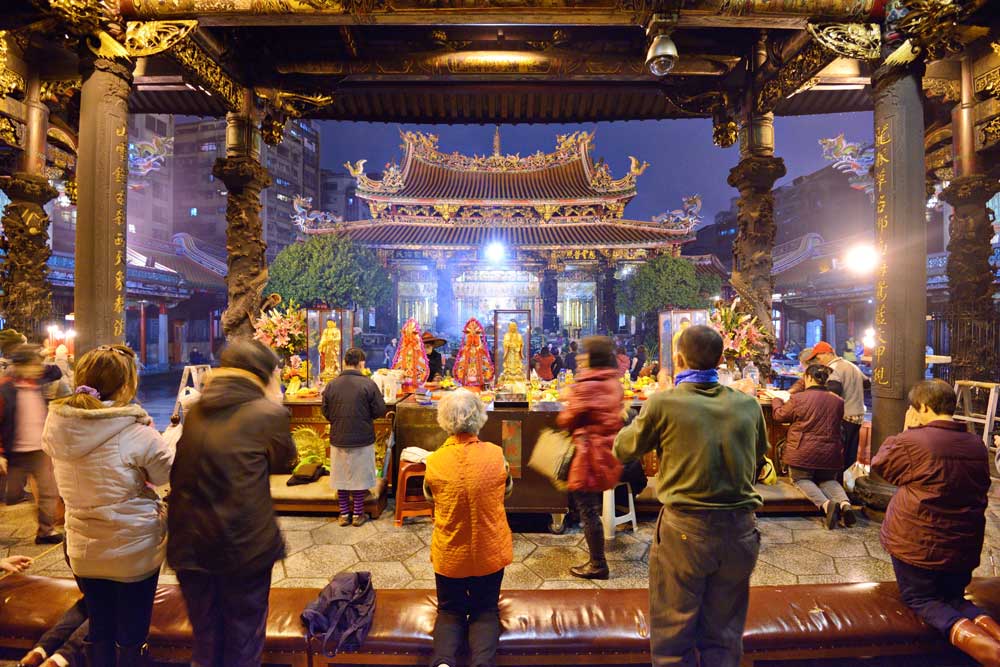
Be a part of the noble mission as a supporting member or a patron, or a volunteer contributor of content.
The power of Dharma to help sentient beings, in part, lies in ensuring access to Buddha’s precious Dharma — the mission of Buddha Weekly. We can’t do it without you!
A non-profit association since 2007, Buddha Weekly published many feature articles, videos, and, podcasts. Please consider supporting the mission to preserve and “Spread the Dharma." Your support as either a patron or a supporting member helps defray the high costs of producing quality Dharma content. Thank you! Learn more here, or become one of our super karma heroes on Patreon.
Lee Kane
Author | Buddha Weekly
Lee Kane is the editor of Buddha Weekly, since 2007. His main focuses as a writer are mindfulness techniques, meditation, Dharma and Sutra commentaries, Buddhist practices, international perspectives and traditions, Vajrayana, Mahayana, Zen. He also covers various events.
Lee also contributes as a writer to various other online magazines and blogs.
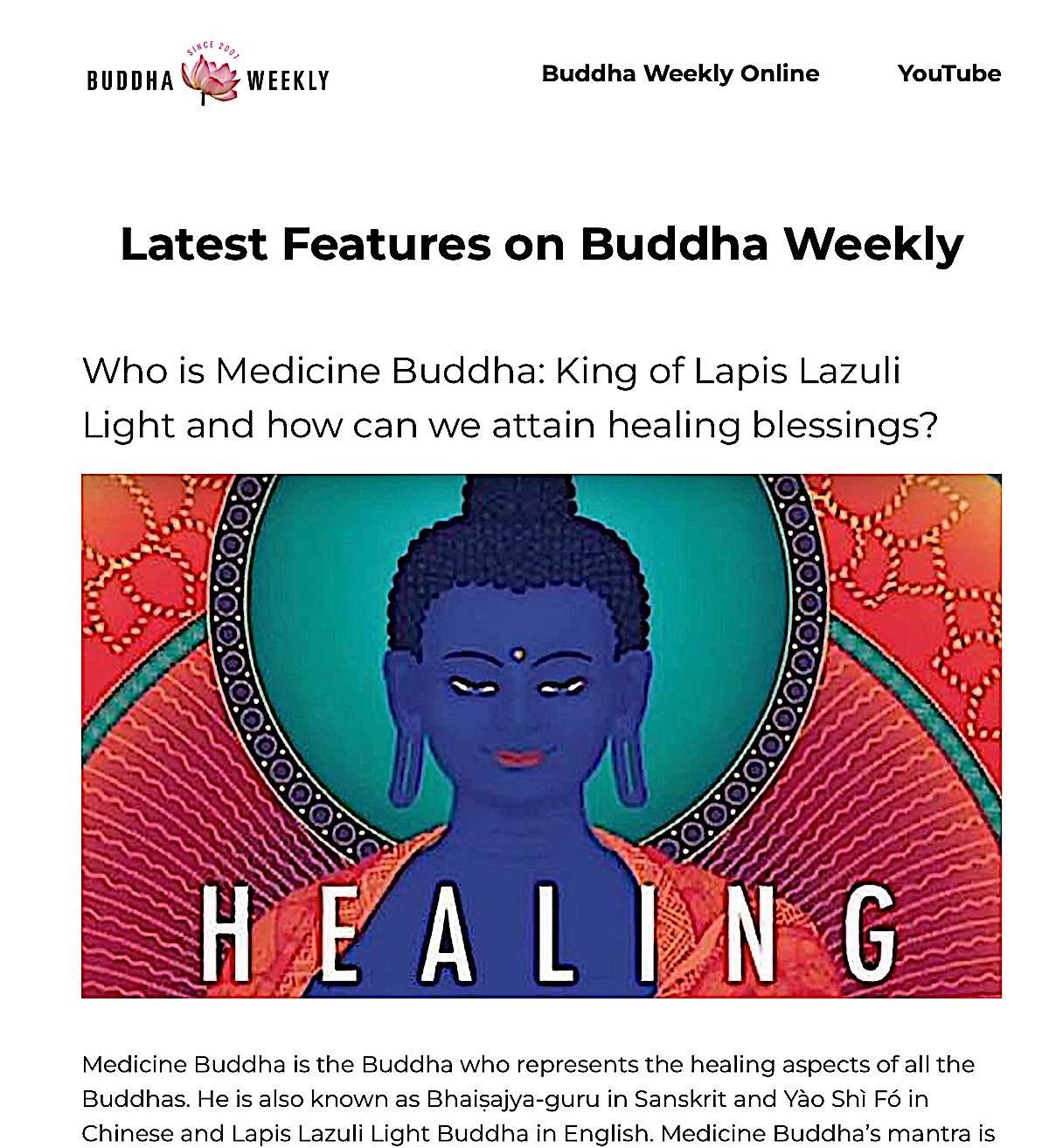
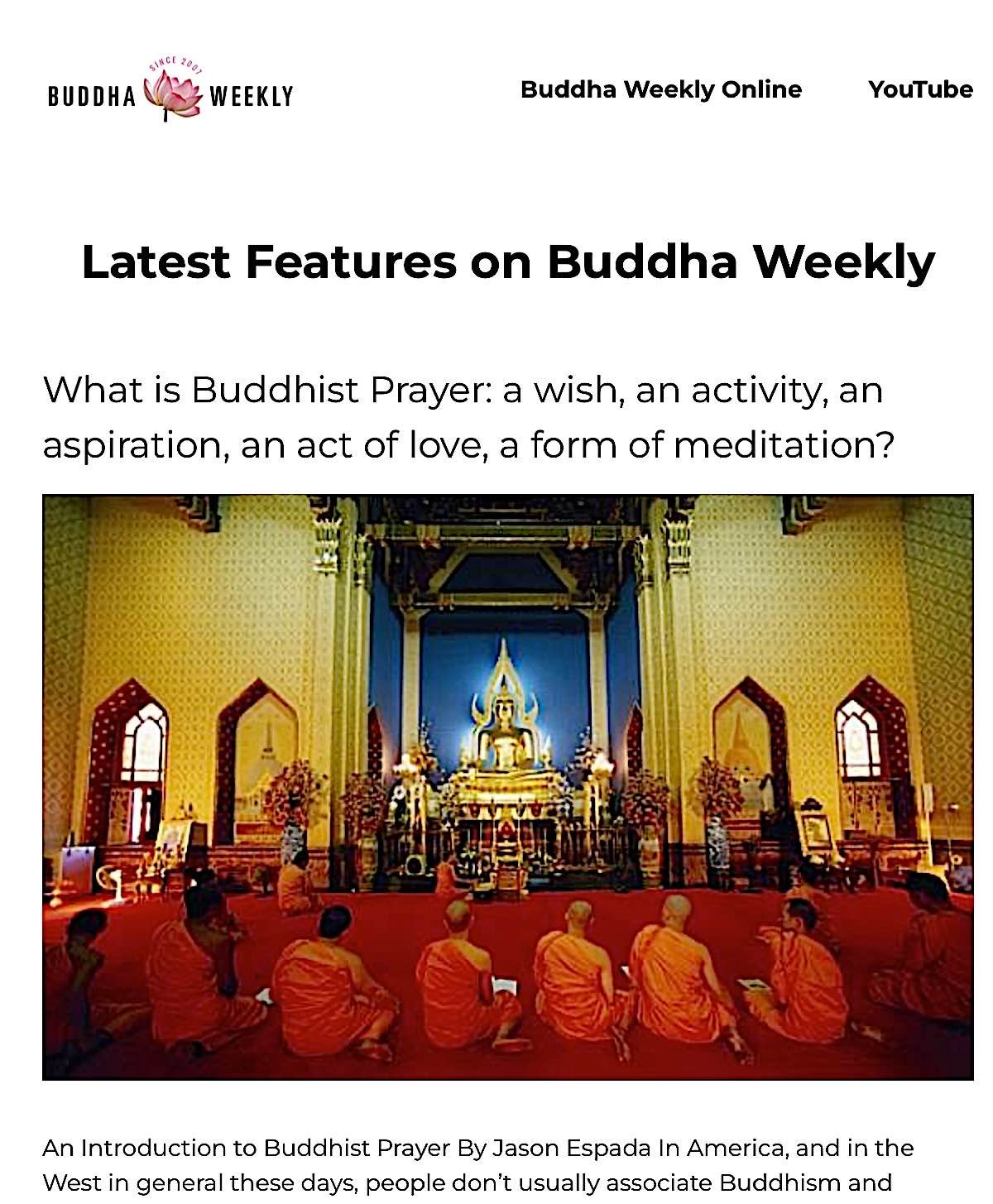







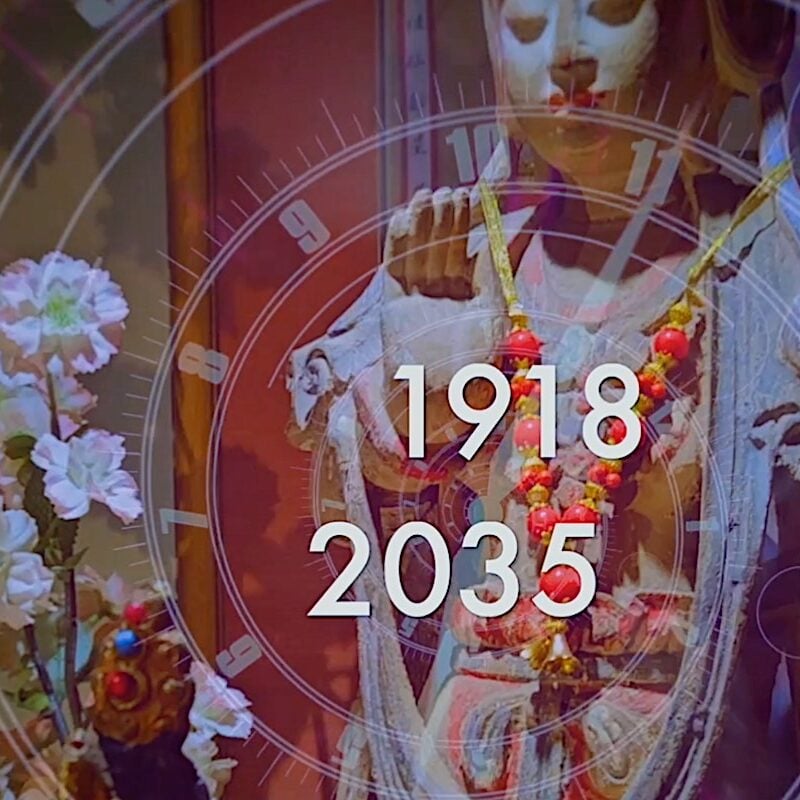
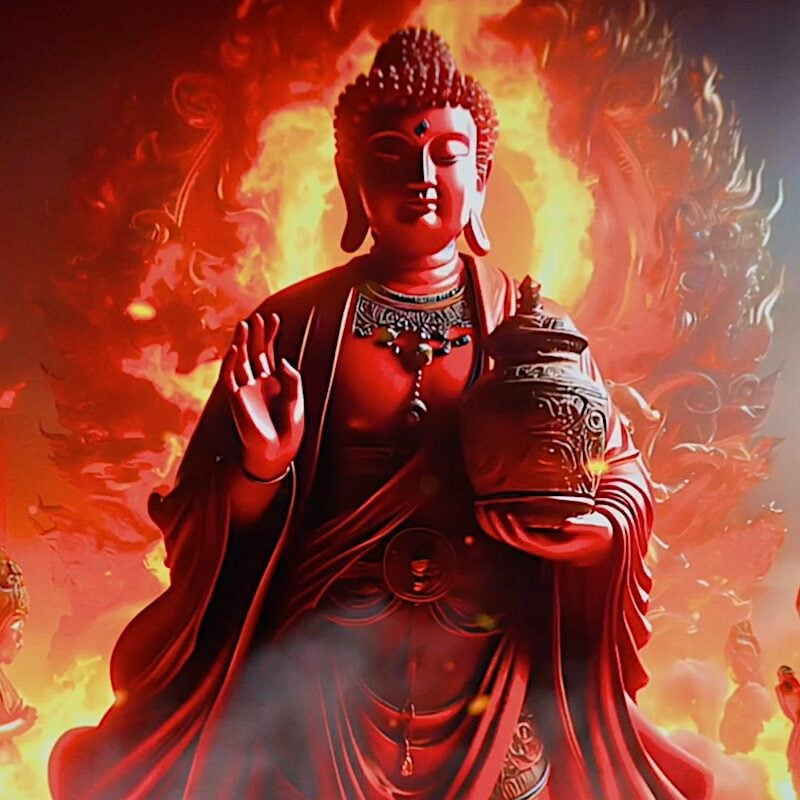
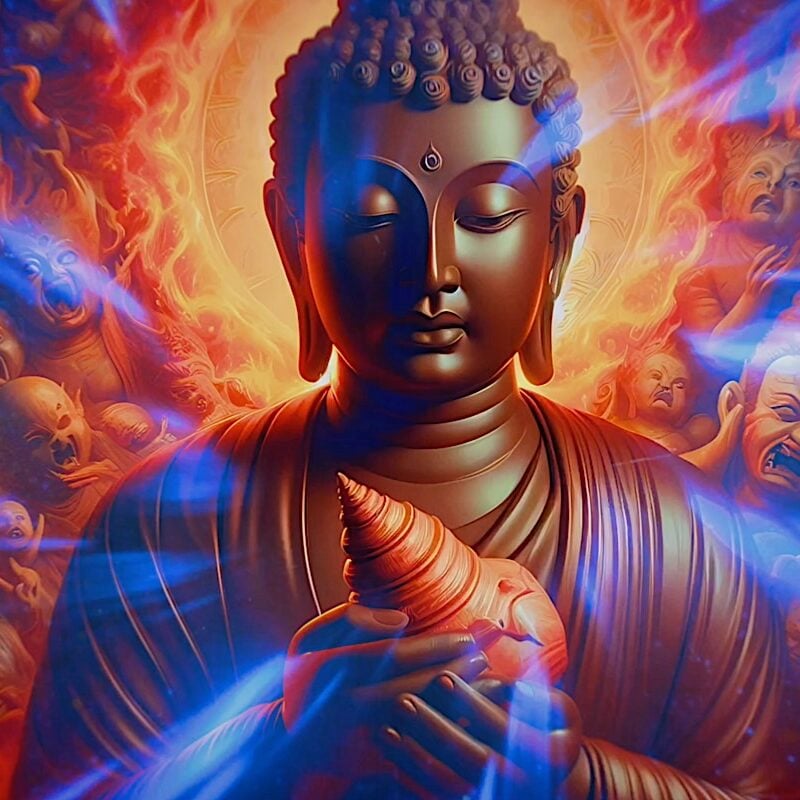
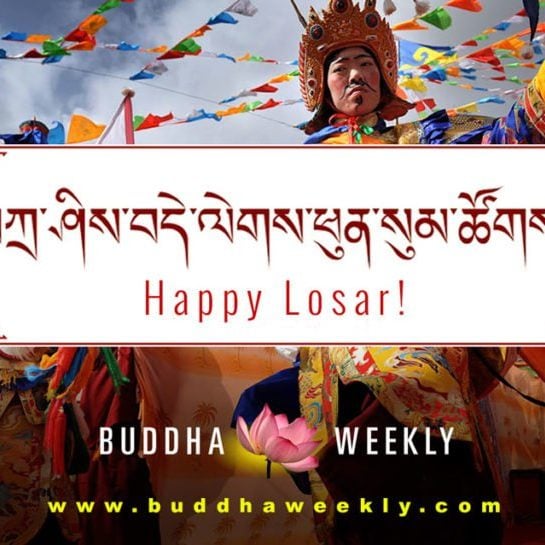




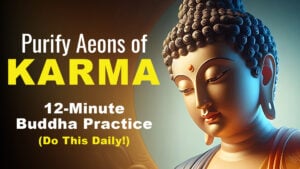

I don’t put much stock in those numbers: for example, I’m pretty sure that S. Korea is majority Christian at this point and I’d bet that Japan has never been 96% Buddhist…
It’s interesting, I think so too, but it’s just interesting anyway. I think the real number’s somewhere in the middle.
Actually, Christianity, especially protestant Christianity, is in decline in South Korea. According to a recent study (I believe it was made 2011) Buddhism rose by 3.2 percents, while Protestantism decreased by 1.2 percents. Catholicism experienced a minor rise, if I recall correctly along the lines of 0.40%.
Furthermore, the general public’s opinion about Christians has taken a hard hit in recent years. It is mainly because many churches have huge debts, Christian officials’ intolerance of other religions, and a few sex scandals involving seemingly devout and morally pure politicians that the Christians have been trying to hide under the carpet. Even more so, Christianity in there has been on a decline since mid-nineties.
One of Buddhism’s boons is that it lacks strict organization and dogmas. Many people in the secularizing West are drawn to it because of that, in addition to its compassionate values. Plus even atheists leave Buddhism alone for the most part in the world, unlike Christianity. At the moment, Buddhism has very few enemies and opposers.
IMO, the future of Buddhism looks very favorable, especially since the Dalai Lama has brought up how “science-friendly” Buddhism is. That is bound to appeal to a lot of modern people. I admit even I converted partly because of that.
But yes, some numbers of the article are way off, especially Japan. It has been a very secular country for almost half a century, and even so the population is largely syncretistic, combining both Shinto and Buddhism. Japan’s true number of active Buddhists would be more like 15-20%, not 96%.
Anyway, I believe China may actually have so many Buddhists. In my experience, most of them are very devoted Buddhists, instead of simply following an old tradition.
I would guess the real number of active Buddhists would be in between 800 millions and 1.2 billion.
Being Japanese the numbers are correct if not low for Japan. Most Japanese embrace the native religion (Shinto) for Weddings at least 96% if not closer to 100% of funerals are BUDDHIST.. I think that is more indicative of the true number of Buddhist are in Japan. Also the measure of religion by quack science outlets like PEW is laughable, Just because the Chinese communist officially say China is atheist does not make all Chinese atheist, just the opposite. I live in America and know many Chinese, Korean, Vietnamese and the vast, vast majority are Buddhist. Buddhism is NOT the second largest religion in the world it is the LARGEST religion in the world and HAS BEEN FOR CENTURIES. Pseudo science rags like PEW research can not be taken seriously. Just because the party secretary of a dictatorship says 1.6 billion people are atheist does not make it so. China has always been a majority Buddhist country and not the small minority while the masses practice no religion. The litmus test would be what final funeral rites are given at Chinese funerals, I can say with certainty the vast vast majority are NOT non-religious but in fact the vast,vast majority are BUDDHIST.. I can also say without a doubt Buddhism IS the fastest growing religion in the USA and definitely the world.
It is indeed. Buddhism is never a religion. But it has turned, worship sometimes becoming religion as additional attachment. It is because of human religiously believe. Notes, Buddha NEVER said there was God nor God. It wasn’t important for his teachings. Buddhism has middle way of teaching “thinking of instrument string, too tight or too loose can’t be played a beautiful song” . Buddhism teaching is the way of life to rid of miseries and reincarnation and many thing else that couldn’t tell all in words or by human us’s languages.
For this number-matter, I was also curious to look and found this page and until now I understand it doesn’t matter how many people follow Buddhism, it doesnt matter.
Amitabha!
I don’t known bhagawan Buddha born in India but why Buddhist population is low in India?
Buddha was born in Lumbini, Nepal not in India. Get some knowledge.
When Buddha had born, there was no Nepal, it was called Ayrabartha, a ample king Dom of ancient India called Kapilabastu, So it is very correct to say Buddha had born in India.
So according to your myth everything significant happened in Asia simply happened in India??? Cool… go on…. that hypocrisy
At that time Lumbini is a part of india.
And now a days Dalit peoples who following Dr B R Ambedkar ,they followe Buddhism…
In india 20 million Dalit lived.and 80% Dalit following Buddhism…But in record they are hindu bcz of goverment facility getting to hindu …So but I confirm says in india 15 million people following Buddhism ..Jay bhim.
Bhagawan Buddha were born in lumbini which is in Nepal.. And you are talking about population of Buddhism in India is low , so in India hindu’s population is more than us but so many people are Buddhism here and population of Buddhism is increasing in India in Gujarat more than 90%-95% of people want’s to accept Buddhism and some of them are already accepted Buddhism. And in India or Maharashtra 500 Hindu people’s leave Hinduism and accepted Buddhism and don’t you know the greatest person of India ,because of that person Buddhism are alive in India , India is depend upon the rajyaghatana which is written by Dr. Babasaheb Ambedkar who accepted Buddhism.in india Buddhism is also known as “Jay Bhim” which is taken by the name of Dr. Bhimrao Ramji Ambedkar . in India we respect Dr. Babasaheb Ambedkar and Bhagawan Gautam Buddha and we are worshipers of them.in future population of Buddhism will increase in India and whole India will be known as Buddhism country. And I know in world Buddhism people’s will increase.
Well said,I could not have agreed more with you.Buddhism always seem to have more tolerance towards other religion.Buddhism survived through all the oppressive movements by Hindus and Islam and against all odds in early days.Brahmins did not accepted Buddhism from the get go because Buddha did not agree with their establishment and the products they introduced to the society such as caste and gender discrimination.
Don’t be miserable and mean “Anonymous”. Gautam, Buddhism was very popular in Indian culture for the first 1,000 years. Then, the Invasions of the Muslim armies in the 5th century greatly diminished the Dharma in the northern regions. Add to that the Buddha’s total dismissal of the Brahman idea of caste, and Buddhism eventually vanished from the sub-continent. It is however, like all Vedic philosophies, tolerant of the ideas of others. It is making a come-back in China, India, and also the west!
Dalit population in india recome budhisam. & Lift hinduisam every day 15000.
buddha was not born in india ..buddha born was Nepal. kapilbastu
Because MANY other religions were born and are peacefully living NOW in India.
Buddhism is the cultural identity of Japan. As to the 96% rating this does not mean that Japanese solely practice Buddhism (Buddhism is inclusive) for most are married in a Shinto rite and the vast majority (over 96%) of Japanese have funeral rites that are Buddhist. The monastery that I belong to is Koyasan (Shingonshu) which was founded by St. Kobo Daishi 1,200 years ago and his name is still ‘a house hold word’ in Japan. Japanese Buddhism has always been engaged in helping persons in need. Shingonshu has been a leader in creating schools, hospital and elder care since the 7th century CE.
wow….
Great. If this is 100% true It will be the best thing happened to the world
I am a Buddhist, but this article seems to have been written by a China apologist, or by a half baked scholar. It does not mention about Tibet while it clearly mentions Taiwan. The number of the Chinese Buddhist is exaggerated and overblown, and there is no credible statistics to back up the claim. On the other hand it totally ignores the number of Buddhist in places like Bangladesh, Nepal, Europe and America even though their number may be far less than 50%. Dalai Lama and the Tibetan diaspora have contributed to the spread of Buddhism the world over, and the article deliberately ignores this fact just to please the Chinese. After all this is yet another of the political article, not a researched fact.
Dear Sherab Gyatso,
Thank you for commenting, appreciate it. I am Tibetan Buddhist practitioner, and the author of this story, and by no means political nor a China apologist, and never claimed to be any sort of scholar (I don’t take offence, I’m just responding to clarify that I’m none of these things). I also see why you feel that way, and have found a separate report with Tibetan numbers, so I will amend the story accordingly. The original numbers, however, were citing a specific report, which reported it in the way I presented the numbers. They were not a willful slant — it is difficult to find the numbers for Tibet in many statistical compilations — but I appreciate your insight that it could be taken this way. According to statistics reported on Buddha Net, Tibet is listed as 65% Buddhist. I don’t know how accurate it is, but Tibet is significant for certain.
This is a reporting piece, focused on numbers only. The reason China is a focus is the sheer magnitude of the population. Of course Tibetan Buddhism, particularly the Dalai Lama have always been a huge driver of increasing populations of Buddhists, particularly in the West, probably more so than any other Buddhist traditions, but this is strictly a numbers reporting piece, based on numbers from two sources. If you read the stories in Buddha Weekly, you will note we extensively cover Tibetan Buddhism — and we steer very far away from any politics. The sudden surge in massive numbers are definitely influenced by China (not the politics or the country, just the sheer number of people.) This is the reason why the optimistic number is so much higher than the conservative number, as explained in the piece. As for the credibility of the numbers, this is likewise explained: we’re reporting on the findings of others and we made it clear there is a “conservative” and “optimistic” number. I hope I don’t sound apologetic:-) Thanks for taking the time to comment.
It will be a good thing special in this time that Buddhism is growing world wide. High time for a good and peacefull change !
I live in the USA and a buddhist, most my friends from all nationalities all self converted to buddhism. We are growing quickly but we do not go around telling everyone we are buddhist unless someone seeks information from us or gets to know us. So many people are seeking the path of enlightenment here. I can definitely say we are the largest religion in the world. Because most my friends are not Asians all self converts and they are spreading the word everyday to those who are doubting their own religiosity views.
I can believe this number, if you add the western and Latin countries explosive growth of buddhist to these numbers. I’m sure the number is way higher. I live in the US and most my friends of not Asian backgrounds are self converted buddhist , im talking around 50+ ppl! And they told me Europe and Latin America has alot of buddhist there too and growing quickly.
This is vRy good news
Coz Buddhism vary old and Daimond religion,
It is founder by human ,
It is benefit by all human
Be happy be peace be secure be free from all kind of suffering, there no god no creator only believe your krama or acton , wisdom is teacher awoken is daly prayer ,
If these figures are accurate this is delightful news! I am a convert to Zen Buddhism and it has changed my life for the better. I hope with the growth of Buddhism we will start seeing a more peaceful and compassionate world.
Dear BuddhaWekkly,
Thank you so much. I agree that the population of the world’s Buddhists has increased due to the adding of numbers from China and Japan. Previously China was almost excluded as it was a staunch anti-religious country and Japan was regarded as a Shinto country. But Buddhism allows its adherents to practice other religions or sects like Hinduism and Shintoism so that the Buddhism census recorders took just one religion as professed like China to be atheist and Japan Shintoist. Now both are counted a smajority Buddhist. Welcome.
Is the percentage in 2016? If it’s not, what year was this calculated?
Hi Hope, 2014 numbers, with some references back to 2010 data for verification.
What year was this calculated?
Definitely Buddhism is growing fast and it is good for human beings. I suggest the people to embrace Buddhism to get peace in life.
Amazing for numbers back in 2014, imagine the % now, buddhism is way more prevalent these days!
Certainly as a Mahayana Buddhists we are an organized religion and very faithful to teach and coach others to attain enlightment for themselves. Our temples in the US are exploding in numbers and in members. All new members have either self converted or born as buddhist and then reaching out to other buddhist or found one of the temples to be educated on the faith.
I too see Buddhist numbers growing in America. It is very heartening news! Hopefully this trend will continue because Buddhism has so much to offer. It has helped me immensely and my life is much more peaceful and focused after I became a Buddhist.
I believe and through research that many people in the western world profess to carrying out aspects of Buddhism, especially the spiritual and meditation. Many people are spiritual shoppers and pick and mix aspects of THEIR religion to suit their emotional and spiritual needs. However, as there are no turnstiles on Churches or religious centres it is difficult for anyone to really known. Nevertheless, what is recognised now in the West is that people chose as individuals and have what is known as individual religions. Even Christianity recognises this, not all people turn up at a Buddhist centres or a church or mosque or Gurdwara, people stay at home and practice their religions in a low key and dignified way. Therefore, who really knows how many people practice Buddhism or aspects of their religion, I say far more than we think.
Good evening to all. I am an American trying to make sense of a life that has been often confusing and painful as I am trans gendered and from a family with much dysfunction, abuse and suicide. I have found the teachings of Buddha to bring me peace and awareness such as I have never known since an innocent child. I have not taken part in organized activities or talked about it with anyone but closest friends. I think there are many people like me especially in the West who practice this in “a low key and dignified way” as Vivienne put it. I am so grateful to have found the teachings of Buddha. I thought while reading about Buddhism in China immediately of the situation in Tibet. Since they are under armed occupation by a much stronger country, perhaps the only way out of that is to bring as many people in China to their way of life as possible? It’s a thought.
Yes, I think the estimate of 1.6 billion is pretty on par with my personal intuitive estimate of Buddhists, which is about 1.5 billion (low estimate) to about 1.8 billion. This number includes all types of Buddhists, ranges from nominal, syncretic mix (Shinto-Buddhism/Taoist-Buddhism) to devout Buddhist. The Pew Research, a Christian organization, provides a really doubtful figure on the correct estimate and % growth of Buddhists.
Oh, if this is true, it should be the greatest news to me. I hope Buddhism to grow not because I’m a Buddhist, its just because I wish the people in this world should be happier, get more wisdom, less angry, less sad, less bad, less war, less stupid…. Buddhism is the Key for Happiness, for Peace in this world I believe 100%.
Anyone in this world can practice the Buddhism, such as Meditation. Even the Christians or Muslims can practice meditation without converting, Buddhism doesn’t need any number of Buddhists, but need the people to get more happiness more wisdom more inner peace. That is the unique purpose of Buddhism and the Buddha.